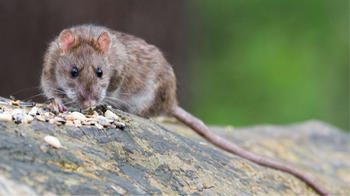Rats
-
AboutRats are among the most common pests in Marin homes and gardens. Norway rats (Rattus norvegicus) also known as brown, sewer, or wharf rats, are mostly nocturnal. They constantly explore and learn about their environment, memorizing pathways, obstacles, and locations of food and water. Roof rats (Rattus rattus), also called black or tree rats, are smaller than Norway rats and agile climbers. Native wood rats (Neotoma spp.) are generally not pests. They build nests above ground from sticks, twigs, plant materials, and man-made debris, hence their common name of "pack rats."
 Photo: Pxfuel
Photo: Pxfuel
-
Signs/Symptoms
Large comma-shaped droppings. Pitter-patter of tiny, but speedy feet across roof at dusk or dawn. Bird seed that disappears overnight. Chunks missing from tomatoes and other edible crops. Gnawed plastic and resin food containers, electrical wires, doors, walls, and insulation. Burrowing types can undermine building foundations and slabs. Rats eat almost any type of food: fruits, nuts, pet and bird food, fresh grain, meat and fish, even slugs and snails.
-
Where
Norway rats burrow along building foundations, beneath rubbish or woodpiles, in moist areas, and in gardens and fields. Indoors, they usually frequent the ground floor or the basement. Roof rats live and nest above ground in shrubs, trees (they particularly like palms) and dense vegetation such as ivy, honeysuckle, and blackberries. They have an excellent sense of balance, running along overhead utility lines or fence tops at night, traveling up to 300 feet for food. Inside, they can be found in attics, walls, false ceilings, and cabinets.
-
When
Rats are problem pests at all times of the year.
-
Prevent
Harvest ripe fruit and pick up fallen fruit, nuts, and vegetables. Feed pets during daylight and remove uneaten food right away. Keep garbage and recycling cans covered. Store bulk foods, birdseed, and pet food in covered metal containers. Use rodent-proof bird feeders. Trim trees, shrubs, and vines four feet away from roof and utility poles. Thin heavy vegetation from around buildings or fences. Stack wood and household items at least 18 inches above the ground and 12 inches from fences and walls. Seal any opening larger than a dime with rodent-proof material such as metal, hardware cloth, mortar, concrete, or copper mesh wool. Weatherstrip front, side, and garage doors so they close tightly. Keep garage door closed. Repair damaged ventilation screens.
-
Manage
Use traps. Place traps in natural travel ways so the rodents have to pass over them. Put the short side of the trap containing the trigger against the wall or runway. Setting multiple traps 10 to 20 feet apart improves the odds of catching one. Use gloves. Bait the trap with nuts, dried fruit, pet food, peanut butter, or bacon and secure it to the trigger with light string, fine wire, or even glue. Improve trapping success by leaving traps unset with unsecured bait until the bait has been taken at least once.
Invite natural predators. Birds of prey, especially barn owls, enjoy a steady diet of rats and other rodents. Add an owl box to your neighborhood.
Avoid toxins. Many poison bait products kill rats. Unfortunately, these products can also inadvertently injure or kill predators that might eat a poisoned rat.
-
More Information

